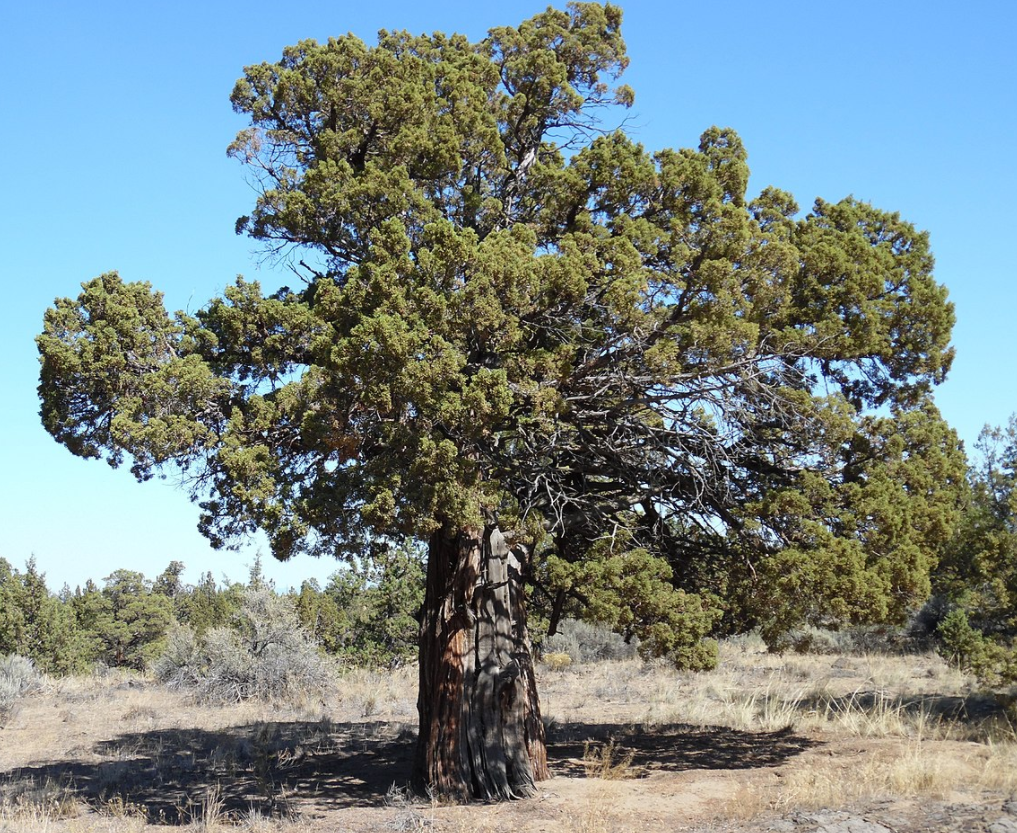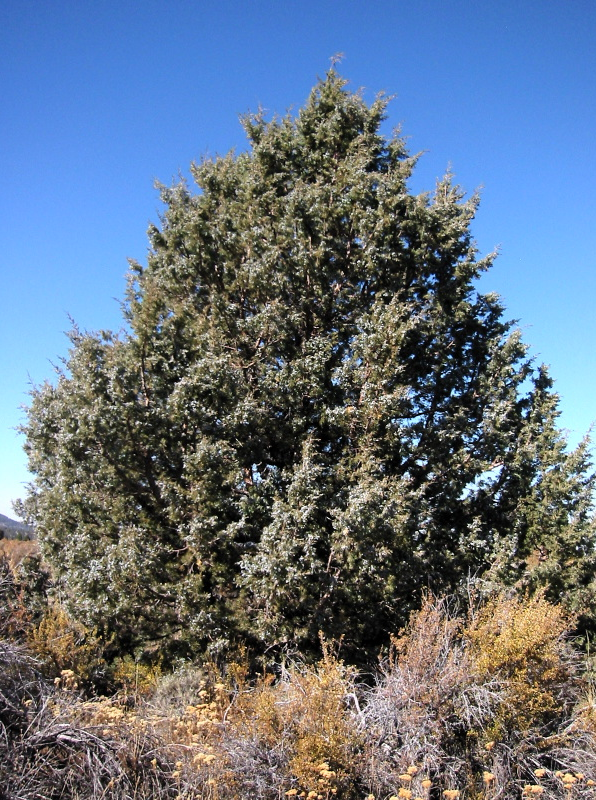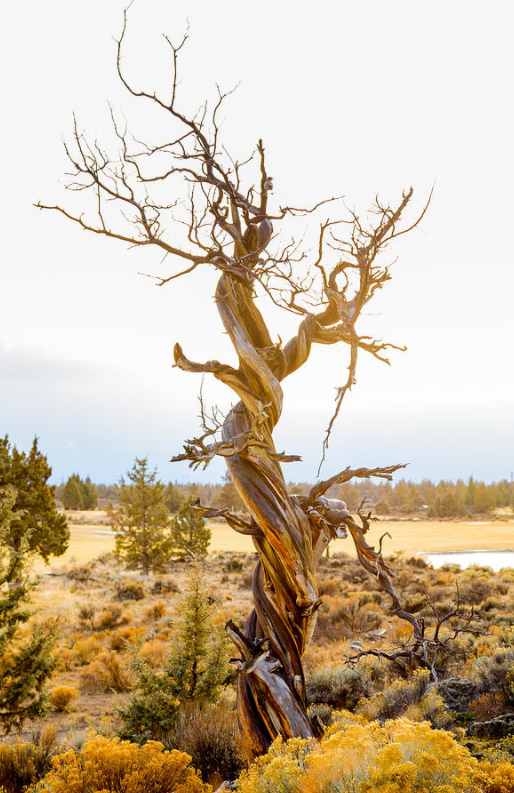Out in the desert, it's pretty easy to spot these two things: a sea of sage, and JUNIPER TREES! These hardy trees are dotted all across the Central Oregon landscape, and are known for their twisted trunks and pale blue berries.
The variety of juniper found in Central Oregon is the Western Juniper, or Juniperus occidentalis. These are amazingly hardy trees (understandably so, as they thrive in the arid high-desert conditions). They typically grow 15 to 30 feet tall, but rarely much more than that.
THAT'S SOME BAD LUMBER!
Juniper does not make for great lumber. Although it may appear to grow straight enough from the outside, the trunk of a juniper grows in a unique spiral beneath its bark. Due to its twisted innards, it is difficult to plane juniper wood. Thank goodness for the straight, tall Ponderosa Pines that fueled the beginning stages of Central Oregon's booming logging industry! (Yes, we'll talk all about that in a later blog post-- stay tuned!)
A bed frame made by Juniper Guy, from Mitchell, OR.
THE BEAUTY WITHIN
While juniper is not used for traditional lumber, its unique, twisting bark lends something to creative pursuits. For this reason, it is a popular wood to use in sculpture and furniture-making.
GIN GIN GIN
That's right -- who could forget about GIN? Juniper berries supply the quintessential sharp, piney flavors often associated with gin. Bend's very own Crater Lake Spirits makes a delicious gin, infused with juniper.
A BIT TOO PROLIFIC
While beautiful in their own right, their resiliency has allowed the Juniper to spread in a similar manner to an invasive species. Because a large reason for their proliferation is a result of human interaction in the environment, they are not truly considered an invasive species as we have played a major role in their spread to other territories and ecosystems. Juniper are so good at surviving in this climate, they will elbow their way into the traditionally sagebrush-dominated ecosystem, taking sun, water, and nutrients from any Quaking Aspen, Bitterbrush, Mountain Mahogany, and other species of tree that might have tried to grow there instead.
The Ancient Juniper Trail
Over 9 million acres of Oregon's Central and Eastern landscapes are covered with this tree, which can suck up to 40 gallons of water a day, even from the arid desert soil! In fact, the Western Juniper has made its way into Northern California, Idaho, and Washington, and these lands comprise the largest Western Juniper woodland on earth. It's no wonder that many local companies and businesses refer to the juniper in their names, and logos.









